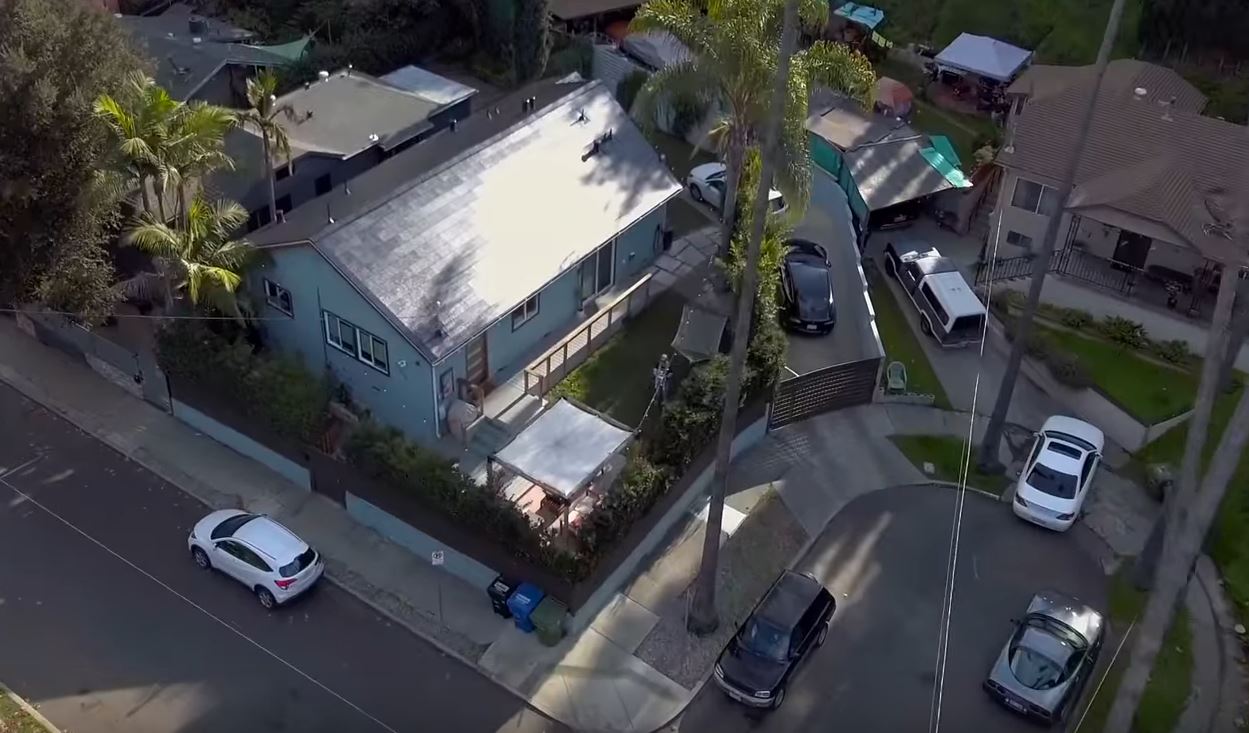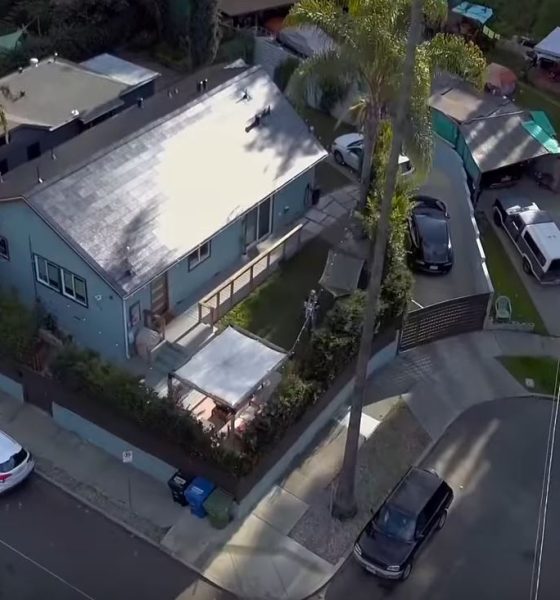

Energy
Tesla Solarglass Roof: LA-based homeowner shares first impressions of V3 roof tiles
As the cost of installing solar drops in the United States by as much as 70% in the last decade, more and more homeowners in the US are considering a switch to greener energy. At the forefront of Tesla’s push into residential solar is its flagship Solarglass roof, which are essentially solar cells that look like standard roofing tiles. Yet, inasmuch as Tesla’s Solarglass tiles have caught numerous headlines in the past, many questions about the product, such as its durability, installation process, and real cost, remain.
Los Angeles, California-based Austin Flack is one of the first consumers to get a Tesla Solarglass Roof. In a recent video shared on YouTube, Flack decided to share his first impressions about his Tesla Solarglass experience.
“We placed our order in early November and were scheduled for installation in mid-December, but rainy weather pushed installation into January. Unfortunately, the federal rebate fell from 30% in 2019 to 26% in 2020, but Telsa was kind enough to give us a 4% discount to make up the difference,” Flack wrote on the description of his review on YouTube.
COST OF TESLA SOLARGLASS ROOF
Prior to the announcement of Tesla about the latest version of the company’s flagship solar product in October 2019, Flack and his wife thought of getting Tesla solar panels but they discovered that their roof, which measures 1,745 sq.ft., wasn’t properly designed and installed.
The couple decided to compare the cost of getting a new composite roof plus the Tesla solar panel array they need. Estimates for the composite tile roof ranged roughly between $9,000 and $12,000. Meanwhile, Tesla calculated that their Los Angeles home would need a system size of around 9.087 kW with some room for energy needs to grow. The quote from Tesla for the Solarglass Roof is $33,749 after rebates. This price is about $3,000 more expensive than the cost of getting a composite tile roof with the equivalent solar panel array setup.
According to Flack, they went for the Solarglass Roof and found the price reasonable “given the enhanced aesthetics of solar glass and how much value it might add to our home.”
SOLARGLASS ROOF INSTALLATION
Installation of the Solarglass Roof started on Jan. 6 and took 7 days including removal of the old roof, installation of Solarglass tiles, replacement of other roofing elements, and hardware setup.
Flack shared that their new roof is mostly solar tiles with some dummy tiles for the edges and to fit near the vents and pipes. The roof was also raised by about 1.5 inches to have some space for wiring and ventilation.
From the solar tiles, Tesla neatly installed conduit boxes in their attic and directed the power to a DC inverter, shutoff switches, and 200 amp electrical box.
The couple is still waiting for the final approval to turn on the system and promised to post an update video once it’s online.
“For now, we are very happy with the Solar Glass. It’s beautiful. It’s durable. It’s guaranteed for 25 years, and when fully operational it will completely zero out our electrical bill,” Flack said.
TESLA SOLAR ENERGY BUSINESS WILL SHINE IN 2020
Tesla’s solar business had its moments under the cloud and seemingly losing its shine amid rising competition from smaller solar roof installers and lower subsidies for solar panels. With the solar business’ back on the wall, Elon Musk re-aligned and reignited Tesla’s solar push with the promise to ramp up production and aim to install more solar roofs compared to previous years. Musk showed a more cautious side and for most, that was a good thing.
“In the long term, I expect Tesla Energy to be of the same or roughly the same size as Tesla’s automotive sector or business. This is the most underappreciated group. I think it could be bigger, but it’s certainly of a similar magnitude to Tesla Solar. Meaning, if you take Tesla Solar plus battery stuff, Tesla Energy is, I think, the least appreciated element,” Musk said.
At present, Tesla offers $250-incentive for new customers and for people who will refer other buyers.
In December, Tesla also installed canopies for their solar test houses in its Fremont factory, reminiscent of how it used big tents to solve Model 3 production issues. During the same period, Tesla looked to hire more installers to beef up its teams in California, Texas, Nevada, and Florida. In Q3 of 2019, the company deployed about 43MW of solar, about 48% more compared to Q3.
Check out Austin Flack’s first impression of the Tesla Solarglass Roof below:

Cybertruck
Tesla updates Cybertruck owners about key Powershare feature

Tesla is updating Cybertruck owners on its timeline of a massive feature that has yet to ship: Powershare with Powerwall.
Powershare is a bidirectional charging feature exclusive to Cybertruck, which allows the vehicle’s battery to act as a portable power source for homes, appliances, tools, other EVs, and more. It was announced in late 2023 as part of Tesla’s push into vehicle-to-everything energy sharing, and acting as a giant portable charger is the main advantage, as it can provide backup power during outages.
Cybertruck’s Powershare system supports both vehicle-to-load (V2L) and vehicle-to-home (V2H), making it flexible and well-rounded for a variety of applications.
However, even though the feature was promised with Cybertruck, it has yet to be shipped to vehicles. Tesla communicated with owners through email recently regarding Powershare with Powerwall, which essentially has the pickup act as an extended battery.
Powerwall discharge would be prioritized before tapping into the truck’s larger pack.
However, Tesla is still working on getting the feature out to owners, an email said:
“We’re writing to let you know that the Powershare with Powerwall feature is still in development and is now scheduled for release in mid-2026.
This new release date gives us additional time to design and test this feature, ensuring its ability to communicate and optimize energy sharing between your vehicle and many configurations and generations of Powerwall. We are also using this time to develop additional Powershare features that will help us continue to accelerate the world’s transition to sustainable energy.”
Owners have expressed some real disappointment in Tesla’s continuous delays in releasing the feature, as it was expected to be released by late 2024, but now has been pushed back several times to mid-2026, according to the email.
Foundation Series Cybertruck buyers paid extra, expecting the feature to be rolled out with their vehicle upon pickup.
Cybertruck’s Lead Engineer, Wes Morrill, even commented on the holdup:
As a Cybertruck owner who also has Powerwall, I empathize with the disappointed comments.
To their credit, the team has delivered powershare functionality to Cybertruck customers who otherwise have no backup with development of the powershare gateway. As well as those with solar…
— Wes (@wmorrill3) December 12, 2025
He said that “it turned out to be much harder than anticipated to make powershare work seamlessly with existing Powerwalls through existing wall connectors. Two grid-forming devices need to negotiate who will form and who will follow, depending on the state of charge of each, and they need to do this without a network and through multiple generations of hardware, and test and validate this process through rigorous certifications to ensure grid safety.”
It’s nice to see the transparency, but it is justified for some Cybertruck owners to feel like they’ve been bait-and-switched.
Energy
Tesla starts hiring efforts for Texas Megafactory
Tesla’s Brookshire site is expected to produce 10,000 Megapacks annually, equal to 40 gigawatt hours of energy storage.

Tesla has officially begun hiring for its new $200 million Megafactory in Brookshire, Texas, a manufacturing hub expected to employ 1,500 people by 2028. The facility, which will build Tesla’s grid-scale Megapack batteries, is part of the company’s growing energy storage footprint.
Tesla’s hiring efforts for the Texas Megafactory are hinted at by the job openings currently active on the company’s Careers website.
Tesla’s Texas Megafactory
Tesla’s Brookshire site is expected to produce 10,000 Megapacks annually, equal to 40 gigawatt hours of energy storage, similar to the Lathrop Megafactory in California. Tesla’s Careers website currently lists over 30 job openings for the site, from engineers, welders, and project managers. Each of the openings is listed for Brookshire, Texas.
The company has leased two buildings in Empire West Business Park, with over $194 million in combined property and equipment investment. Tesla’s agreement with Waller County includes a 60% property tax abatement, contingent on meeting employment benchmarks: 375 jobs by 2026, 750 by 2027, and 1,500 by 2028, as noted in a report from the Houston Business Journal. Tesla is required to employ at least 1,500 workers in the facility through the rest of the 10-year abatement period.
Tesla’s clean energy boom
City officials have stated that Tesla’s arrival marks a turning point for the Texas city, as it highlights a shift from logistics to advanced clean energy manufacturing. Ramiro Bautista from Brookshire’s economic development office, highlighted this in a comment to the Journal.
“(Tesla) has great-paying jobs. Not just that, but the advanced manufacturing (and) clean energy is coming to the area,” he said. “So it’s not just your normal logistics manufacturing. This is advanced manufacturing coming to this area, and this brings a different type of job and investment into the local economy.”
Energy
Tesla and Samsung SDI in talks over new US battery storage deal: report
The update was related by industry sources and initially reported by South Korean news outlets.

Recent reports have suggested that Tesla and Samsung SDI are in talks over a potential partnership to supply batteries for large-scale energy storage systems (ESS).
The update was related by industry sources and initially reported by South Korean news outlets.
ESS batteries to be built at Samsung’s Indiana plant
As noted in a report from Korea JoongAng Daily, the demand for energy storage systems has been growing rapidly in North America, thanks in no small part to the surge in AI investments across numerous companies. With this in mind, Tesla has reportedly approached Samsung SDI about a potential battery supply deal.
The deal is reportedly worth over 3 trillion Korean won (approximately $2.11 billion) and will span three years, according to The Korea Global Economic Daily. A battery supply deal with Samsung SDI could make sense for Tesla as the company already has a grid-scale battery, the Megapack, which is perfect for industrial use. Samsung SDI could simply supply cells for the EV maker.
Production of the batteries would reportedly take place at Samsung SDI’s joint venture factory with Stellantis in Indiana, which is currently under construction. Samsung SDI recently announced plans to use part of that plant’s EV lines to produce cells for ESS, with a targeted capacity of 30 GWh by the end of next year.
Tesla and Samsung’s partnership
At present, only a handful of manufacturers, including Korea’s LG Energy Solution, Samsung SDI, SK On, and Japan’s Panasonic, are capable of producing energy storage-scale batteries domestically in the United States. A Samsung SDI official issued a comment about the matter, stating, “Nothing has been finalized regarding cooperation with Tesla.”
The possible energy storage system deal adds another layer to Tesla’s growing collaboration with Samsung, which is already in line as a partner in the upcoming production of Tesla’s AI5 and AI6 chips. Early sample manufacturing of the AI6 is expected to begin in South Korea, with mass production slated for Samsung’s Texas-based Taylor foundry when it starts operations.
The AI6 chip will power Tesla’s next wave of high-volume projects, including the Optimus humanoid robot and the autonomous Cybercab service. Musk has called the partnership with Samsung a “real collaboration,” adding that he personally plans to “walk the line” at the Taylor facility to speed up progress.








